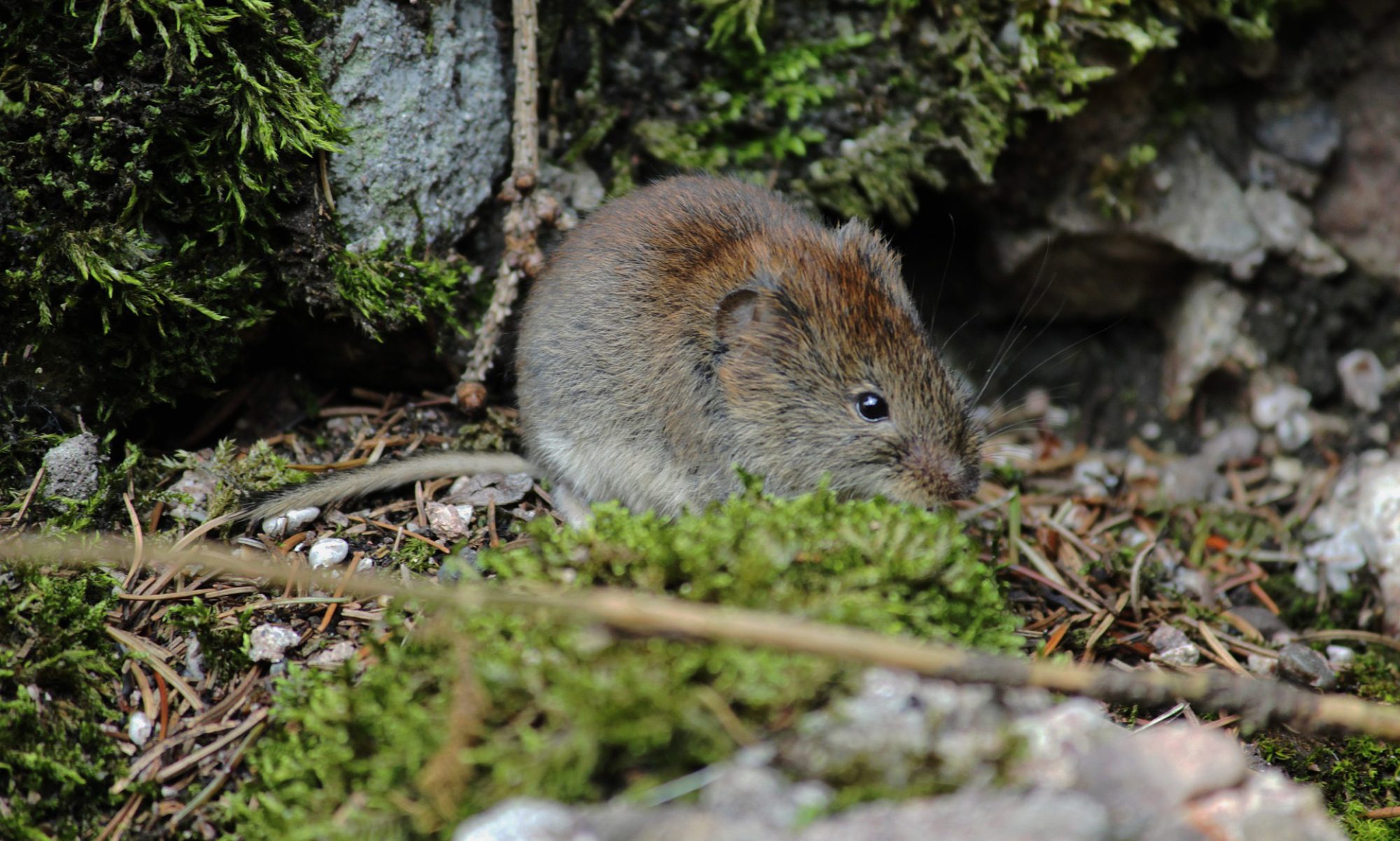Water is naturally recycled constantly through a process called the water cycle, this process allows the movement of water from the sea, to the sky, to the land and back again!
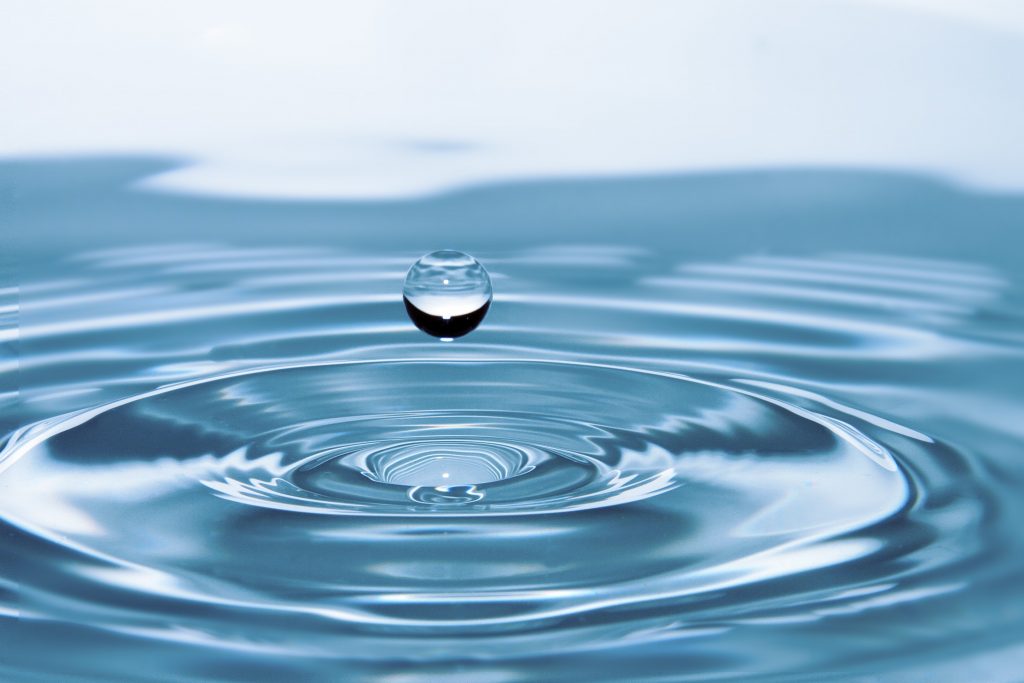
There are four main stages to the water cycle: Evaporation, Condensation, Precipitation and Collection.
Evaporation
When water from large bodies of water (seas, oceans and lakes) is heated by energy from the sun, it changes state and turns from a liquid into water vapour. When this water vapour is mixed with warm air it begins to rise up into the atmosphere, this happens so often that it is thought that 90% of the moisture in our atmosphere is from the evaporation stage!
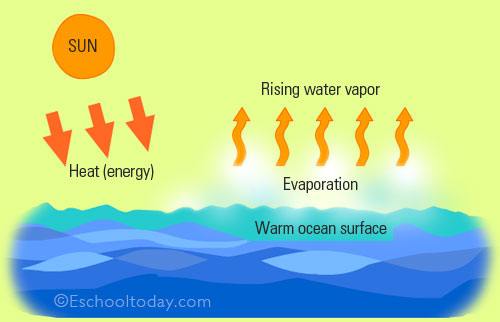
Water can also rise into the atmosphere via a process called Transpiration which happens when plants expel water from the pores in their leaves. This water then evaporates into the atmosphere or is blown into the atmosphere by the wind!
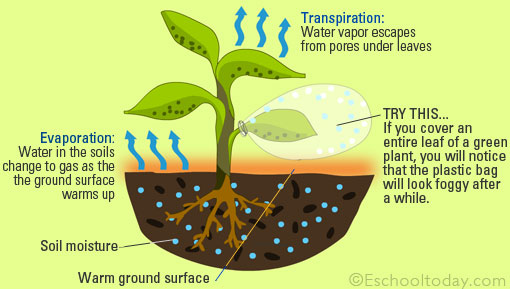
Condensation
After the water vapour has risen into the atmosphere it begins to cool down again, when this happens the water starts to turn back into it’s liquid state. But as the water vapour rises it mixes with other tiny particles in the atmosphere, like dust and salt, these are called aerosols.
So when the water vapour cools back down, it becomes small droplets of water or ice crystals, which then stick to the aerosols in the atmosphere creating a bundle of water and aerosols. This process is called coalescence which is the process of creating clouds! The wind then blows these clouds all around our globe, taking the water all around the Earth!
(Although, should these aerosols be pollution, rather than a natural particle like dust, the clouds can become acidic or polluted and during precipitation the water can be harmful to our environment.)
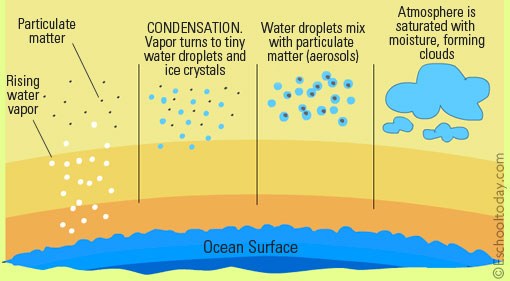
Precipitation
So now we have clouds! However, soon there is more moisture in the atmosphere than the air can manage- so the clouds become saturated. (Every seen a really dark cloud? Those are the saturated ones!) Eventually, when these clouds are saturated, gravity takes over and the water and aerosol droplets must fall back to earth. As I am sure you know, depending on the air temperature, the water droplets can fall as rain, snow, sleet or hail!
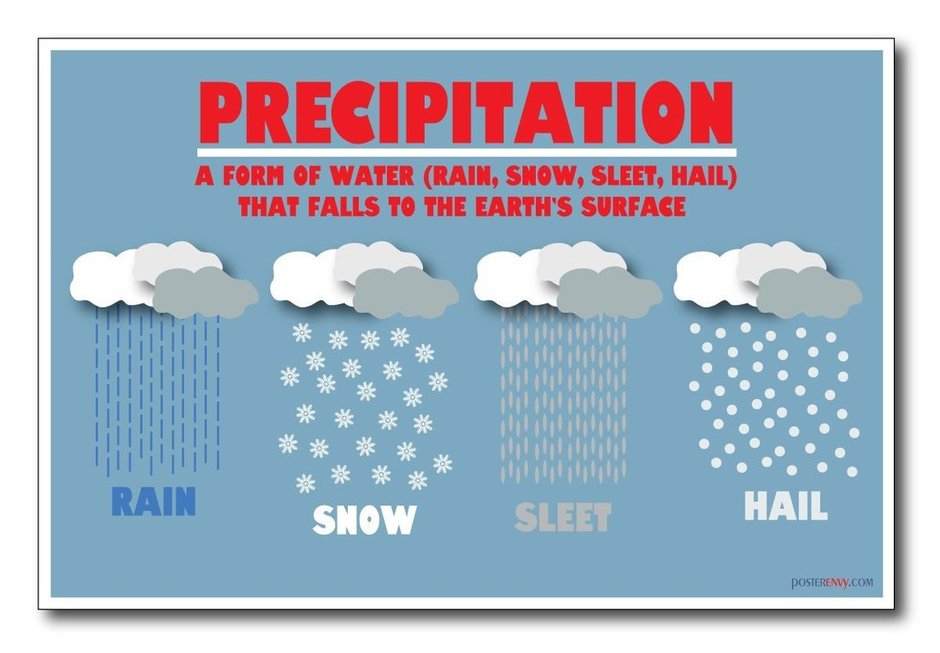
Collection
When these water droplets make it back to Earth what happens next depends on which area of Earth they landed in. For example, if the water lands in the sea or a lake then the process just starts again! However, if the water falls to land it will be used before it is returned to the seas, oceans and lakes. The water keeps our planet alive! So the water could be absorbed by plants or the soil, it may be collected by humans for drinking water or for farming and could be a factor in thousands of other biological processes. The aerosols that come down with the water can be really helpful to our environment too, some salts and other nutrients can help plants grow!
Water that hits the ground but is not used is called run-off, this excess water flows across the Earth’s surface until it joins another large body of water. This is how rivers are formed. (But more on that later in the week so stay tuned!)
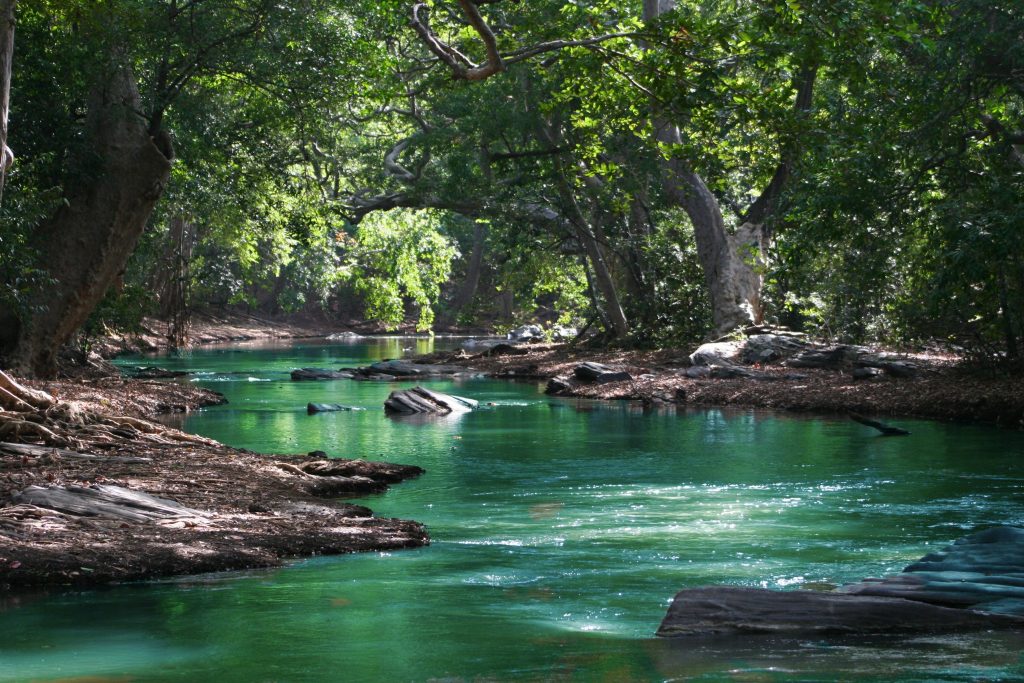
The water cycle
When all of these processes work simultaneously, we get the water cycle! And as long as the Sun shines the Water Cycle will continue!

